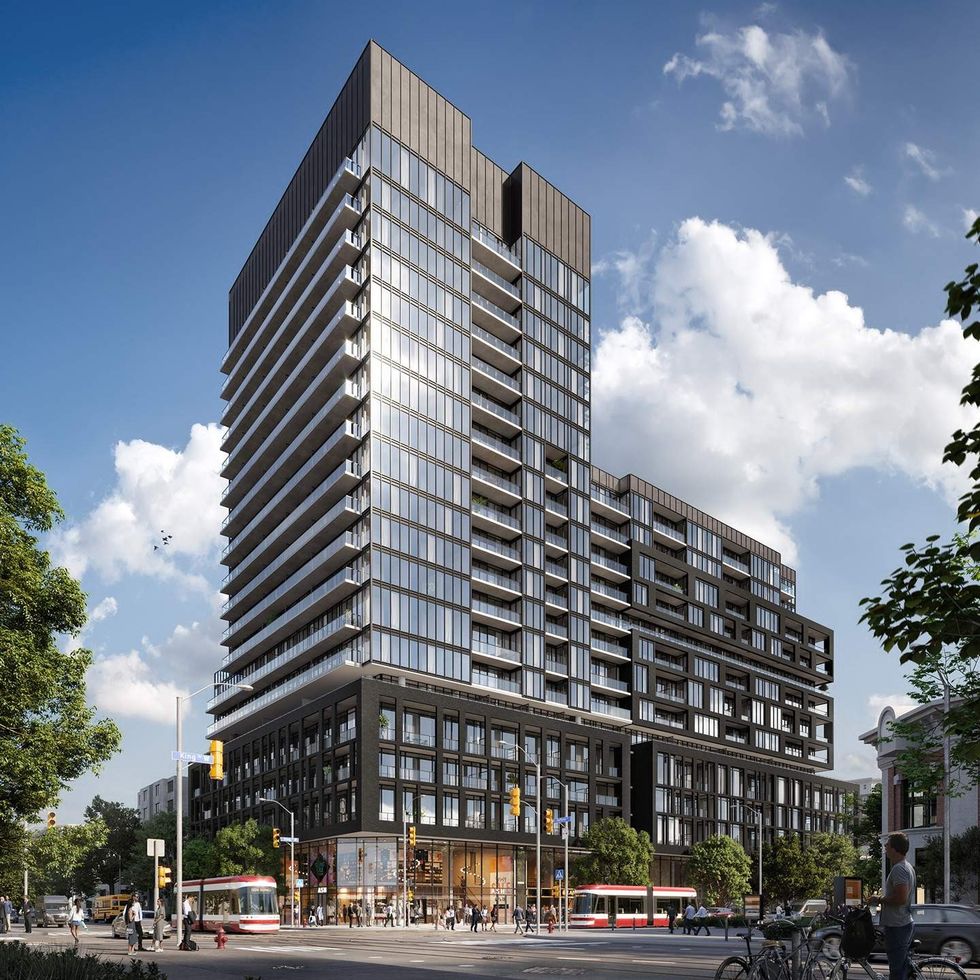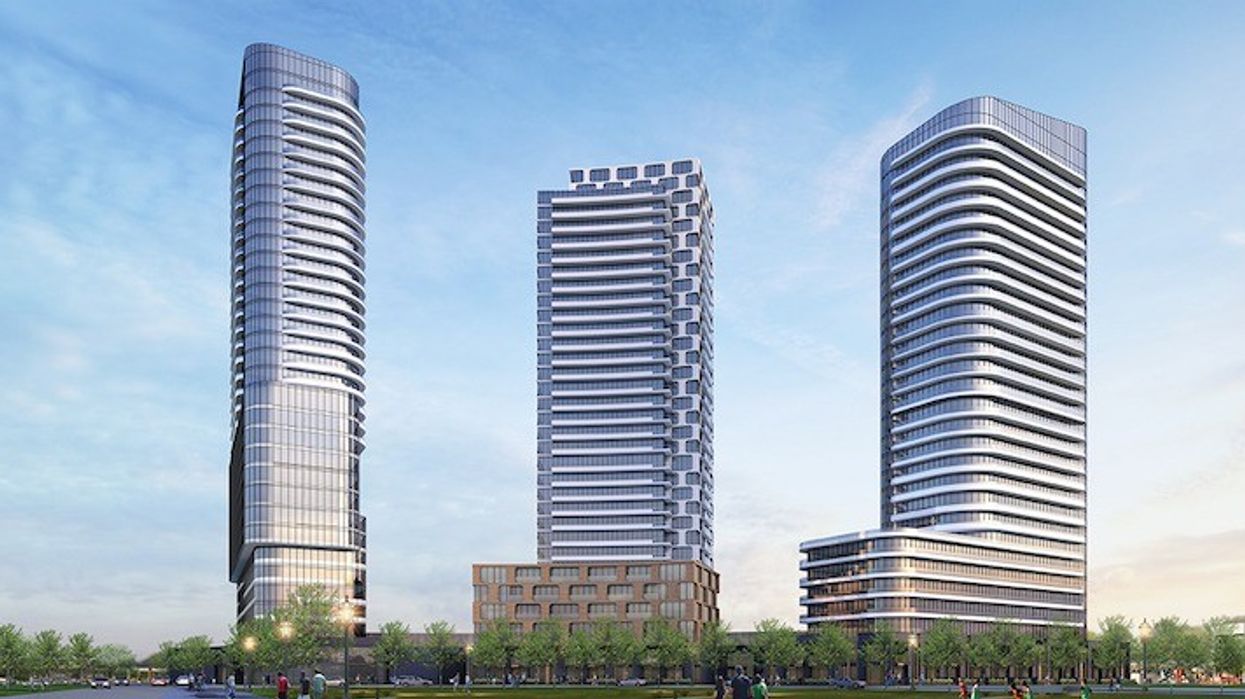It makes you wonder why these people choose to live in a city.
A community meeting about two proposed developments at King and Dufferin last week revealed a population opposed to almost every aspect of urban life. Attendees made it abundantly clear they don't like construction, condos, shade, noise, traffic, deliveries, new residents, and most of all, change. Their gripes may be understandable, but if you inhabit downtown Toronto, you'd better get used to them.
There's nothing unusual about such unabashed NIMBYism, of course. In this and most cities, it is alive and well. The difference here is that the Not-In-My-Backyarders are aided and abetted by civic officials from the local councillor on down.
Both sites are butt ugly
In this case, the issue was a pair of proposals, one for the northeast corner of King and Dufferin, the other for the southwest corner. Both included towers, 19 and 14 storeys, that barely qualify as high-rise. The first proposal would replace a strip mall that has a McDonald's and a cheque-cashing joint. The second proposal would occupy the site of what's now a nondescript one-storey box, that brings little more to the neighbourhood than a jumble of greasy spoons. Both sites are butt ugly and a blight on the urban landscape.
But don't tell the locals. According to them, both are essential elements of the intersection and the neighbourhood and utterly irreplaceable. Without them, Parkdale would be ruined, completely destroyed. Their councillor, the otherwise estimable Gord Perks, spent most of the evening nodding agreement with his constituents. He made no secret of his dislike for the schemes, developers and, it seemed, the very notion of urban growth.
To be fair to Perks and residents, the proposals presented were clearly superior to the plans first unveiled by Lifetime Developments in 2015. Those included towers, though a few storeys taller, glass facades and narrower sidewalks.
Community pressure convinced Lifetime and its designer, CORE Architects, to introduce masonry exteriors that fit in with the Parkdale context. The buildings are also set back a bit farther, which means wider sidewalks and more public space. Other amenities have been added, among them a pedestrian walkway running north from King, east of the southeast corner. In other words, both the builders and architects upped their game because they were forced to. The community made sure of that.

At the same time, the fixation on height and the fear of change is painfully irrational and often self-destructive. Torontonians consistently fail to understand that the most crucial part of any development, new or old, is what happens at street level. That is where life unfolds.
Let's be honest about King and Dufferin. It's an important intersection but also a dreary mess, largely because of the two buildings that Lifetime will replace. These earlier schemes date from an era when planners and politicians were busy trying to remake the city to suit the needs of cars and drivers. Strip malls were the way of the future. If only.
We know better now. Despite what Torontonians fear, density — another word for height — is good. It is inappropriate in some locations, but King and Dufferin isn't among them. This corner calls out for something bigger and better. Density means more people, which means increased economic activity and a bigger marketplace. Here that translates into more shoppers at local stores, more spending in local restaurants and more money circulating in the local economy.
Naive or disingenuous
The neighbours rightly complained about the lack of affordable housing in the two complexes. But anyone who believes that the private sector will solve this issue without government incentives and/or prodding is either naive or disingenuous. The private sector's main concern is the bottom line — until that includes affordability, we can forget about it.
Density also means more pressure on public transit, namely the 504 streetcar, but that's a larger issue the city hasn't had the courage, will or intelligence to deal with. It's too wrapped up in Mayor John Tory's absurd and ruinous one-stop Scarborough subway to pay much attention to what's really needed. But this shouldn't be used as an excuse to stop urban growth. Eventually, Tory will go and — we hope — be replaced by more enlightened leaders who grasp the difference between planning, politics and populism.
No one would argue that these two projects couldn't be more elegantly designed, but that's pretty much always true. As they are, both would be entirely positive additions to a neighbourhood that desperately needs change, regardless of what the neighbours believe.
Yes, they will cast shadows and increase the number of TTC riders. If that's the worst thing critics can say, they can be safely ignored.
Indeed, if, like the one-floor slab and the strip mall now, Lifetime's offerings face demolition in 50 or 60 years, rest assured the neighbours of the future would be just as angry. This time, however, their arguments would not be as easily dismissed.





















